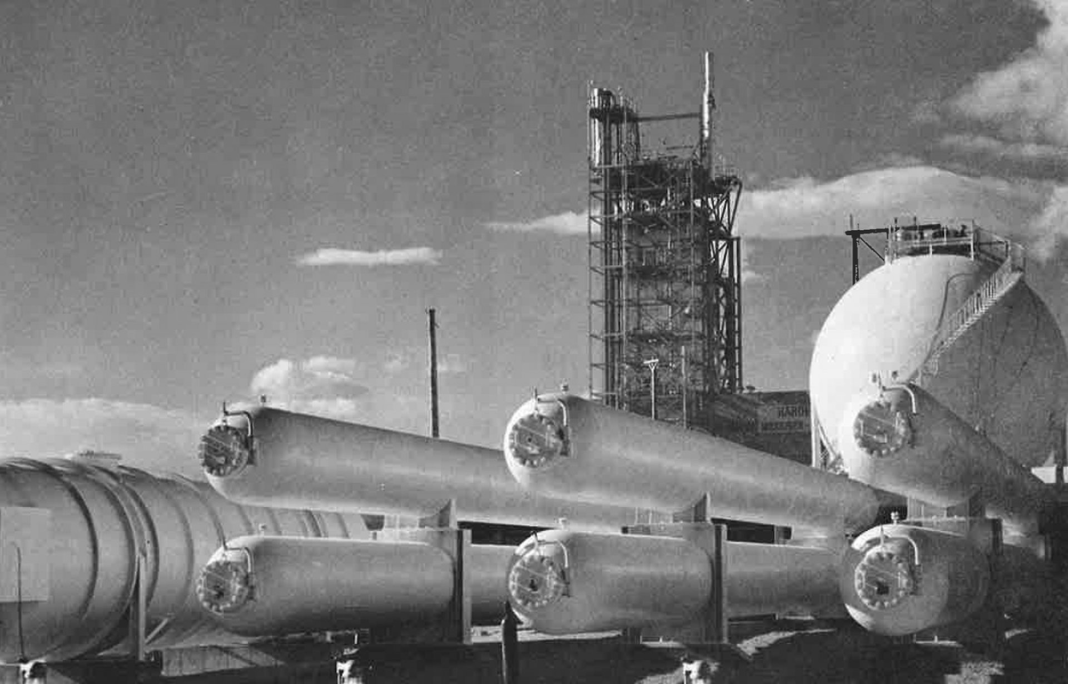[ad_1]
Starting in the 1950s, the United States began focusing on developing nuclear propulsion as an effective way to power space exploration. Several programs made significant progress in this effort. Years of planning and testing proved the feasibility and potential of these systems. However, many problems have thrown serious doubts about future development.
Cold War plans to go to Space
During the Cold War, the United States focused on using nuclear energy for more than just weapons. Scientists and politicians started thinking about going to space and exploring other planets. They knew they had to develop engines powerful enough to launch rockets into space, and some wondered if the engines could be nuclear.

Projects Rover and NERVA Focused on Nuclear Propulsion Designs
There was even some talk about this as early as 1945, but the first serious program, Project Rover, started in 1955. The U.S. Atomic Energy Commission managed Rover intending to use nuclear thermal propulsion on rockets. Their mission was to design a nuclear reactor that could power a rocket engine, develop an appropriate propellant, and conduct design testing. Scientists at Los Alamos National Laboratory did the early work on the project.
Later, the government started the next phase, the Nuclear Engine for Rocket Vehicle Application (NERVA) program. Its purpose was to design a flyable nuclear engine that could handle the stresses and vibrations of a space launch. The idea was to add the nuclear engine as an upper stage on a Saturn V. They also hoped to conduct a test flight in 1970.

Advantages of Nuclear Propulsion
Together, Projects Rover and NERVA proved that nuclear propulsion was feasible in rockets and had some significant advantages over the chemical engines powering rockets at the time.
One of the main advantages nuclear engines had over chemical engines was in efficiency. Scientists measure rocket engine efficiency based on seconds of specific impulse. With this method, nuclear engines proved to be at least twice as efficient as chemical engines. Nuclear engines also provided high thrust.

Another significant advantage of nuclear engines is that they were lighter and smaller than chemical engines. Because of this, the rockets could trade propellant weight for more payload capacity. Nuclear engines could also give rockets greater range. All of this, combined with their higher efficiency and thrust, made nuclear engines an attractive option for powering rockets in the early space program.
Problems Add Doubts on Programs that Use Nuclear Power in Rockets
While scientists and engineers working on Rover and NERVA saw many advantages in using nuclear propulsion, they encountered many, if not more, problems with the technology. From the start, they had to develop new complex designs and processes for reactors, materials, radiation, structures, and control systems.
An example of this complexity was in the temperatures they had to deal with. The liquid hydrogen propellant was at minus 400 degrees Fahrenheit, while the exhaust temperatures from the engines were at least 4000 degrees. Scientists felt that most metals and alloys could not handle more than 4500 degrees. They reported that this was so serious that one out of every three people working at Los Alamos spent their time focusing on temperatures.
An article in the ANS Nuclear Newswire on Project Rover makes a similar point: “Transferring liquid hydrogen at minus 400 degrees Fahrenheit is about as easy a handling problem as causing water to move smoothly through a white-hot furnace.”
Another problem was in the testing methods. They initially tested the engines with the nozzles pointed up. When they wanted to test the engines pointing down, they had to make sure oxygen would not be sucked into the nozzle and cause an explosion when the oxygen and hydrogen came together.

Scientists Surprised by Test Results
The people working on Rover and NERVA sometimes used language that made them feel unsure or lacking confidence in the projects. As a result, they were unable to accurately predict their test results.
One example is in an article in the ACTININD Research Quarterly from Los Alamos. Scientist Richard Malenfant wrote, “This article summarizes the lessons learned in the development of this technology, illustrating that surprises are certain to be encountered when undertaking such advanced programs.”
Inconsistent Language from Scientists on Nuclear Programs
Malenfant added that “experimental results were reported only in informal progress reports” and that “heating was inconsistent.” He later referred to the design and test issues as “just a sampling of the unknowns that were to be addressed.”
Another example is in an article in the January 1963 issue of Nuclear News, which states, “Each of these six tests has been of immense value, though often in an unexpected way.”

It is difficult to imagine the public would support a nuclear program with so many uncertainties. However, it is hard to deny the advantages of nuclear propulsion.
In the end, the cost of these programs may have become their primary obstacle. The government reduced funding to NERVA in the late 1960s and canceled the program in 1973.
The hope of using nuclear propulsion in rockets did not end there. In 1983, when there were discussions about developing the Strategic Defense Initiative (Star Wars) program, there was talk of using nuclear engines more powerful than chemical rockets. Also that year, the government started a new program, “Project Timber Wind,” that became part of the Space Nuclear Thermal Propulsion program. It ran from 1987 until 1991. At that point, NASA canceled it after deciding it had made no improvements over the designs of the Rover program
[ad_2]
Source link


